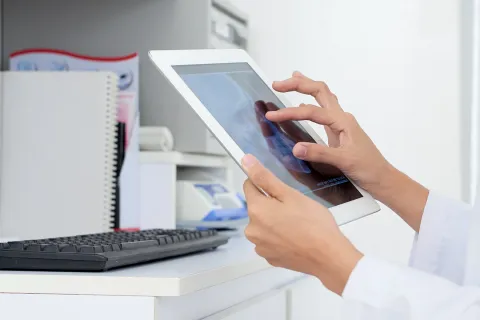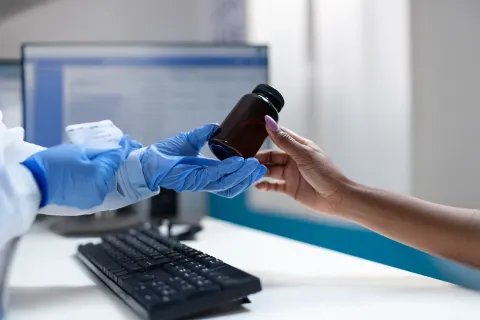The rise of digital health technologies and the need for more efficient data exchange have sparked a significant shift in how pharmaceutical labeling is handled. One of the most notable innovations is the transition from traditional paper-based labels to electronic Product Information (ePI), driven by the Fast Healthcare Interoperability Resources (FHIR) standard.
ePI FHIR represents the future of pharmaceutical labeling by enabling seamless, structured, and interoperable exchange of product information between healthcare systems, Regulatory authorities, and consumers. This blog explores the significance of ePI FHIR, its potential to revolutionize the industry, and how pharmaceutical companies can prepare for this transformative change.
What is ePI FHIR?
ePI refers to the digital version of the official product information for a pharmaceutical product, including essential details such as indications, dosage instructions, contraindications, side effects, and storage conditions. Traditionally, this information has been provided in printed form or as a PDF. However, ePI allows for the integration of this data into healthcare systems in a structured, machine-readable format.
FHIR, on the other hand, is a globally recognized standard developed by Health Level Seven International (HL7). FHIR enables the exchange of healthcare information between systems in a standardized way, making it easier to share data across various platforms, including electronic health records (EHRs), Regulatory systems, and even mobile applications.
When combined, ePI and FHIR create a powerful tool that transforms the way product information is communicated within the healthcare ecosystem. This shift not only improves efficiency but also enhances patient safety, compliance, and access to critical drug information.
The Benefits of Transitioning to ePI FHIR
- Enhanced Data Accuracy and Consistency
One of the key advantages of ePI FHIR is the ability to standardize product information across different regions, languages, and platforms. By using a structured format, pharmaceutical companies can ensure that their labeling information is consistent and accurate, reducing the risk of errors or discrepancies that could lead to non-compliance.
For healthcare providers, access to up-to-date and accurate product information is crucial for making informed decisions about patient care. With ePI FHIR, healthcare systems can automatically pull the latest product information directly from Regulatory databases, ensuring that healthcare professionals are always working with the most current data. - Improved Patient Safety and Compliance By making product information more accessible and transparent, ePI FHIR can significantly improve patient safety. When product information is embedded directly into EHR systems, it becomes easier for healthcare providers to check for potential drug interactions, contraindications, or allergies, minimizing the risk of adverse events.
In addition, ePI FHIR can enhance Regulatory compliance by providing a standardized method for submitting product information to health authorities. Regulatory agencies, such as the U.S. Food and Drug Administration (FDA) and the European Medicines Agency (EMA), are increasingly recognizing the value of digital product information in streamlining the approval process and ensuring ongoing compliance. As more Regulatory bodies adopt ePI FHIR, pharmaceutical companies that transition early will be well-positioned to meet these evolving requirements. - Greater Efficiency and Cost Savings The traditional process of updating and distributing product information can be time-consuming and costly, especially when changes need to be made across multiple markets. With ePI FHIR, updates to product information can be made in real time and automatically shared with all relevant stakeholders. This not only reduces administrative costs but also speeds up the time it takes to get updated information into the hands of healthcare providers and patients.
In addition, ePI FHIR reduces the reliance on printed labels and packaging inserts, helping companies cut down on paper waste and improve their environmental sustainability efforts. - Better Patient Access to Information Patients are increasingly turning to digital platforms for information about their medications. By adopting ePI FHIR, pharmaceutical companies can provide patients with easy access to product information via mobile apps, websites, and other digital tools. This empowers patients to make informed decisions about their health, ensuring they understand how to take their medications safely and effectively.
Preparing for the ePI FHIR Transition
The transition to ePI FHIR is not just a technological shift; it requires a strategic approach to ensure compliance, interoperability, and alignment with Regulatory expectations. Here are a few steps pharmaceutical companies can take to prepare for the future of digital product labeling:
- Collaborate with Regulatory Authorities: Stay informed about Regulatory developments related to ePI FHIR and actively engage with health authorities to understand evolving guidelines.
- Invest in Technology and Infrastructure: Implement robust digital systems that can handle the creation, submission, and updating of ePI in FHIR format.
- Focus on Data Governance: Establish clear data governance policies to ensure that product information is accurate, up-to-date, and compliant with Regulatory standards.
- Train Teams for Digital Transformation: Equip your teams with the skills and knowledge needed to manage the transition to ePI FHIR and navigate the new digital Regulatory landscape.
Conclusion
The future of pharmaceutical labeling is digital, and ePI FHIR is at the forefront of this transformation. By enabling structured, standardized, and interoperable product information, ePI FHIR offers pharmaceutical companies the opportunity to enhance patient safety, improve Regulatory compliance, and streamline operations.
As the industry moves toward digital solutions, pharmaceutical companies that embrace ePI FHIR will not only meet Regulatory requirements but also position themselves as leaders in innovation and patient care. Freyr’s cutting-edge technology and expert guidance can help you seamlessly transition to ePI FHIR. Contact us today to learn how we can support your digital labeling journey.










